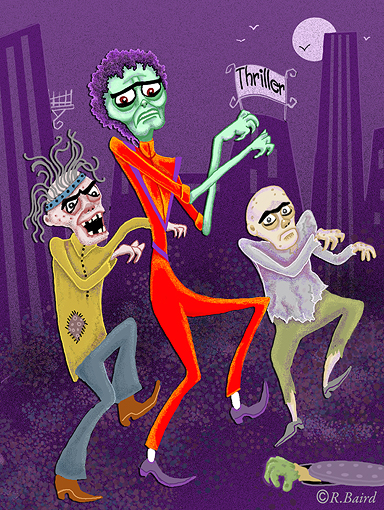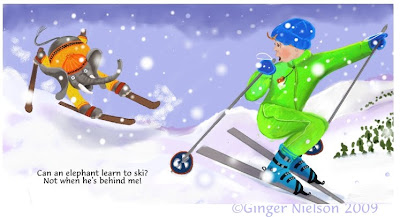 |
| Fast |
 |
| Collect |
 |
| Sad |
 |
| Lost |
 |
| Rock |
 |
| Broken |
 |
| Jump |
 |
| Transport |
 |
| Nervous |
 |
| Scared |
 |
| Tree |
 |
| Wet |
 |
| Battle |
 |
| Escape |
 |
| Flight |
 |
| Squeeze |
 |
| Big |
 |
| Fast |
 |
| Collect |
 |
| Sad |
 |
| Lost |
 |
| Rock |
 |
| Broken |
 |
| Jump |
 |
| Transport |
 |
| Nervous |
 |
| Scared |
 |
| Tree |
 |
| Wet |
 |
| Battle |
 |
| Escape |
 |
| Flight |
 |
| Squeeze |
 |
| Big |
As a hybrid author, I have one foot each in two very different worlds. I am traditionally published and as an author/publisher, I release my own books.
The worlds operate at tangents to each other and one point of contention is this question: how long does it take you to write a novel? Independent author Dean Wesley Smith has recently finished a year of blogging about his daily output, which includes emails, blog posts, novels and short stories. For example in June, Smith wrote 52,800 words of fiction, 14,700 nonfiction, 14,000 for blog posts, and 827 emails of about 22,900 words, for a grand total of 105,200 words.
However, traditionally published authors often agonize over a novel for two or three years. Or more.
Let’s just ask the question straight out? Which method of writing produces great novels? Both.
And don’t let anyone convince you otherwise! Not editors and not indies.
Then why is there such a wide range of discussion on the merits of the two viewpoints on the speed of writing?
From a Traditional-POV, publishers generate over 50% of their income on their backlist, books that continue to sell 1000 copies a year and do so year-after-year. Yes, they need to add new books each year, but because their income isn’t starting at zero, they can be very selective in adding new books. Another strength of traditional publishers is that they have multiple sources of new stories each year, i.e. multiple authors. In fact, they will seldom put all their eggs in one basket, especially not yours. If you write quickly, a publisher will only take ONE of your mss in any given year, at least until you build a stellar reputation.

Writing the Aliens, Inc series was fast! Each book took a month to write and after comments, a week to revise. By contrast, a middle grade novel might take me a year to write.
Traditional publishers source stories from multiple sources, spreading the risk among many authors. Indie author/publishers have only one source of stories, and they must maximize their output.

As my grandchildren are learning to walk and run, it’s tempting to compare the age at which they take that first step. NOT FAIR! Each child–like each novel you write–develops at its own pace. Comparison does nothing but add unnecessary anxiety.
Of course, editors advise writers to slow down. They can’t handle ten books from you in one year. If you write ten in a year, you’ll likely need 5-10 publishers (if you can find them), at least until you build that reputation for blockbuster sales.
Is there value in slowing down? Yes and no. Yes, it’s good to take the time to write well. Speed CAN lead to sloppiness, but it doesn’t necessarily. On the other hand, if your normal writing speed is fast, and you manage to turn out good stories, then slowing down feels like being hobbled. For some, it’s boring to write slow and only work on one project at a time.
The Indie world emphasizes the need for speed. Dean Wesley Smith once asked a group of writers how many words they write in an hour. I shrugged. I could easily write a 1000-words in an hour. Then he suggested that I should be writing 8000 words/day, which would be 192,000 words or about 4 middle-grade novels (or two full-length adult novels) per month.
Wait. Does that math work? Yes.
But it’s also not that easy. When I know what I want to write—such as this blog post—I can easily turn out 1000 words per hour. But writing a novel is a different task. I like the analogy of a spider spinning a web. From her gut, she must create the raw materials of spider web silk, and then like an architect, she lays in the foundations of her web, hanging for her life from that slender silk while she does so. Once the foundation threads are laid, she spins more silk—from her very gut—and weaves a circular web on that foundation. She then lies in wait for a victim to arrive.
Novelists spin characters and conflicts from their very guts and soul. We lay in the foundation of a novel’s plot, and then spin a story around that foundation. Finally, we lay in wait for a reader to be captured by the story.
Once I get a foundation laid, I can spin out that 1000 words per hour. It’s that first part, creating the story’s silk from my very soul, that is hard. As the creator of the Novel Revision Retreat, I also understand the imperative of revising multiple times to get a story right. I teach and practice that a first draft tells you what the story is; the following drafts are for finding a way to tell the story in the most dramatic way possible to hold readers’ attention.
My feet are firmly in both worlds. I need to produce works so I can build my indie backlist and thus up my income levels. However, I also understand that my process is slower than I’d like.
I am working on various ways to boosting productivity, such as learning Scrivener. But in the end, I’m left somewhere in the middle, and I don’t think it’s a matter of straddling the fence.
Instead, I think I am honoring my own process. For blog posts and picture books, I can and do write fast. But for novels, the thinking process is much slower than my ability to type. MUCH slower. It might take me six to twelve months to do this next novel. I refuse to be intimidated by the Indie crowd into going faster. Likewise, one of the appeals of being a hybrid or indie author is that no one can force me to slow down. I don’t have to wait a year for an editor to get back to me with revision notes. I don’t have to wait for an editor who promises a contract for fourteen months, and then rejects the novel, sending me into a new round of hopeful submissions.
Slow writing doesn’t equal good.
Slow writing doesn’t equal bad.
Fast writing doesn’t equal good.
Fast writing doesn’t equal bad.
Instead, I will write at the pace each piece of work demands and allows.
There will always be the Tyranny of the Urgent. This week I’ll be going to North Andover, MA to teach a Novel Revision Retreat and that means I must have the teaching materials done by Wednesday. That’s my writing focus this week.
Fortunately, other deadlines loom in the future and those deadlines will demand that other projects consume my attention. For traditional publishers, the deadlines are few and far between. For indie publishing, I need to have books come out about six months before publication so they can be sent for review. Can I delay a book a month? Easily. But I try to set a publication date and stick with that. It’s a business thing.
Some argue that if you can write quickly under a deadline, then you could do it anytime. Not for me. Because a deadline FOCUSES my writing and writing time in a way nothing else can do.
In other words, external deadlines also affect my output. I still honor what a piece of writing demands, but at the back of my mind, I know what that demand is. And when I add that to the deadlines, I can instinctively allow more or less time before a deadline for that piece.
Good. Write at the pace that works for you for any particular project.
Learn from productivity tips and use whatever software is most productive for you. Don’t be intimidated by editors who demand slow work, or contemporaries who rave about the benefits of writing fast. In the midst of the swirl of opinions, write. Your way. Your stories. As David Bayles and Ted Orland say in Art and Fear, “Your job is to learn to work on your work.” I’ll add: And do it at your own pace.
Fast chicks.
A fast rise to number one on the charts!

The album Thriller was released on November 30. 1982, and sold more than one million copies per week and currently remains the best selling album of all time.
Besides winning 8 Grammy Awards, Thriller cemented Jackson’s status as one of the biggest pop stars of the late 20th century, enabling him to break down racial barriers and gave the musical industry a new direction.
It would’ve been interesting to see where his latest This is It comeback tour would have taken him. We’ll never know. Michael Jackson….gone too fast.
This is it movie opening on October 28, 2009, for two weeks only. Link: HERE

I completed this illustration this week for part of a series I am working on. It seems to fit the subject rather nicely. Others in the series may pop up from time to time.
 ...that he is. 'nuf said.
...that he is. 'nuf said.except this: above is an illustration from the book "The Harp Mouse Chooses Her Home, The Adventure Begins" by Diane E Dunn, illustrated by Donna Pellegata.
To purchase book with mouse finger puppet click HERE
without mouse finger puppet click HERE
Illustration Friday is a weekly illustration challenge. A topic is posted every Friday and then participants have all week to come up with their own interpretation. When you purchase an item from
The world itself has become hectic and life a fast-forward motion picture. Wherever one goes, everything must be done speedily. This is because nowadays, almost in all families, both parents go to work, departing early and arriving late. The indoors work is thus kept pending. Beforehand, the speed of life was not so emphasized upon. Only the husband was the bread-winner and so the housewife had all the time to cook, clean and complete the household chores. Today, the parents, after a hard day’s work, must speed up and prepare something to eat for their children. People, therefore, have to follow the new trend and adjust to a new lifestyle.
Image via Wikipedia
The on-the-move lifestyle includes the eating of fast food among others. But even if “fast food” as we call it, people do not have time to eat a rounder properly; they either gulp it behind the driving wheel or eat it watching the television at the same time. To speed themselves up and save time, people make use of sophisticated machines such as microwaves to cook food quickly, portable computers to complete office work…. After a speedy week, to supposedly relax themselves, people listen to music now – quick, hasty music. It is the hard rock and technos. This music is a great contrast to the old ones that were the real relaxing music.
These small factors contribute to big inventions, speeding the transport rate. Long ago, there were ox carts and slow trains as means of transport. With the evolution of science and technology and due to the speed revolution, buses, cars, motorcycles, aeroplanes as well as super-jet trains travelling at two hundred kilometres per hour were introduced. Their need of fast transport then was satisfied. As their burden of work grew heavier, the need of a quick means of communication was also felt.
Scientists and inventors put their heads together. To support the level of speed of life and promote development, they abolished the hand-over of letters on horse-backs and established the links between one place and the whole world. Speed developed the fax, email methods. Through speed, the distance between the countries of the world is now lessened and so this helps the economic development of countries.
Speed may prove to be dangerous also. The speed of a car, an aeroplane, a ship can endanger the lives of many people, if not properly controlled. Cases of accidents where people had died are numerous. For instance, the well-known ship “Titanic” sank as a result of sailing at full speed and thus inevitably crash into an iceberg. How rightly has one stated that “haste makes waste”.

Image via Wikipedia
Add a Comment

 I gave this Elephant a tint of pink to make him cuter and more lively! I also thought to make this image available over at my IMAGEKIND gallery, this way if you want your own White Elephant Gift Exchange cards, you can purchase them there!
I gave this Elephant a tint of pink to make him cuter and more lively! I also thought to make this image available over at my IMAGEKIND gallery, this way if you want your own White Elephant Gift Exchange cards, you can purchase them there!
Love those chick tattoos…
yikes! those ladies are um, endowed AND tattooed! i don’t think ol’ cluckers there has HALF the chance he thinks he does. great piece, pj!
I dig your line work and colors! Great characters.
they are so.. fast
wonderful. i lov´em!